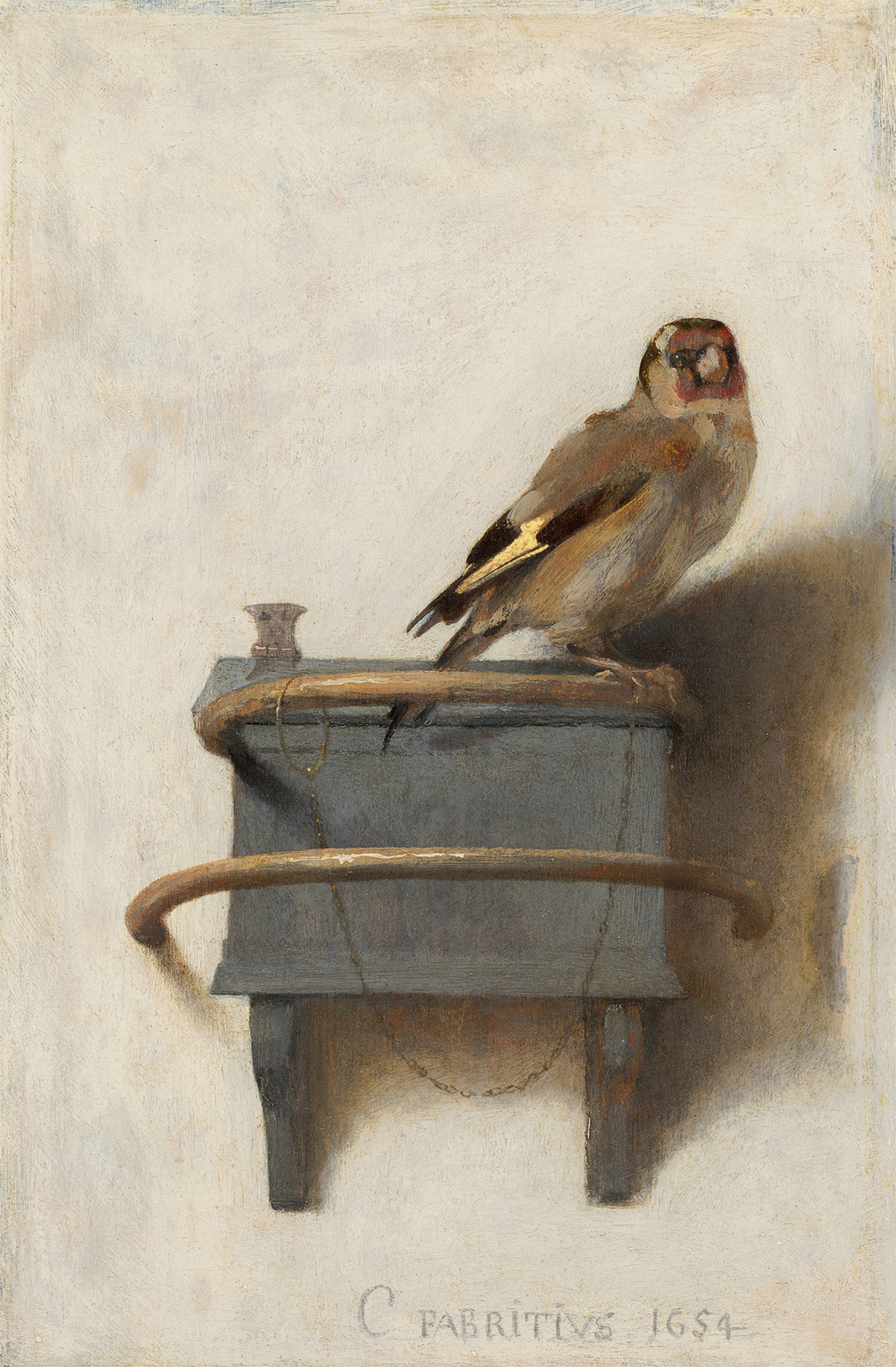
The Goldfinch - Carel Fabritius
- Oil painting on canvas
- 100% Hand-painted
- View quality of this painting
- Shipping
- Return Guarantee
| Title: | The Goldfinch |
|---|---|
| Original location: | Mauritshuis, The Hague, Netherlands |
| Year: | 1654 |
"The Goldfinch," painted by Carel Fabritius in 1654, is a masterpiece that reflects the technical precision of Dutch Baroque.
The small painting depicts a goldfinch chained to its perch, highlighting the handling of light and texture, essential features of Baroque art. Carel, the most prominent disciple of Rembrandt, applied a looser and more luminous style than his contemporaries, standing out for his use of chiaroscuro and atmospheric perspective.
The work is especially relevant because it is believed to have been created shortly before the tragic explosion of the Delft gunpowder magazine, also known as "The Thunderclap of Delft," in the area now surrounding the street called "Horse Market" (Paardenmarkt), which claimed the painter's life and left over a hundred people dead (including his mother-in-law) and around a thousand injured, destroying much of his artwork. Nearly thirty tons of gunpowder had been stored in a convent expropriated from the Poor Clares due to the war against the Spanish Empire, which is believed to have ignited due to Cornelis's malpractice during an inspection of the warehouse. In the most recent restoration of the painting, some shrapnel fragments were still found stuck to the canvas.
"The Goldfinch" showcases Fabritius's ability to capture beauty in simplicity and is considered a significant influence on later painters like Vermeer. Although the painting appears simple, it represents a balance between the ordinary and the transcendent, a symbol of life and human fragility, but above all, it was widely used in those years as protection against adversity and also in Renaissance painting as a symbol of Christian redemption. Knowing this, it's curious to think that the painting of this unique bird survived practically unscathed from such an explosion.